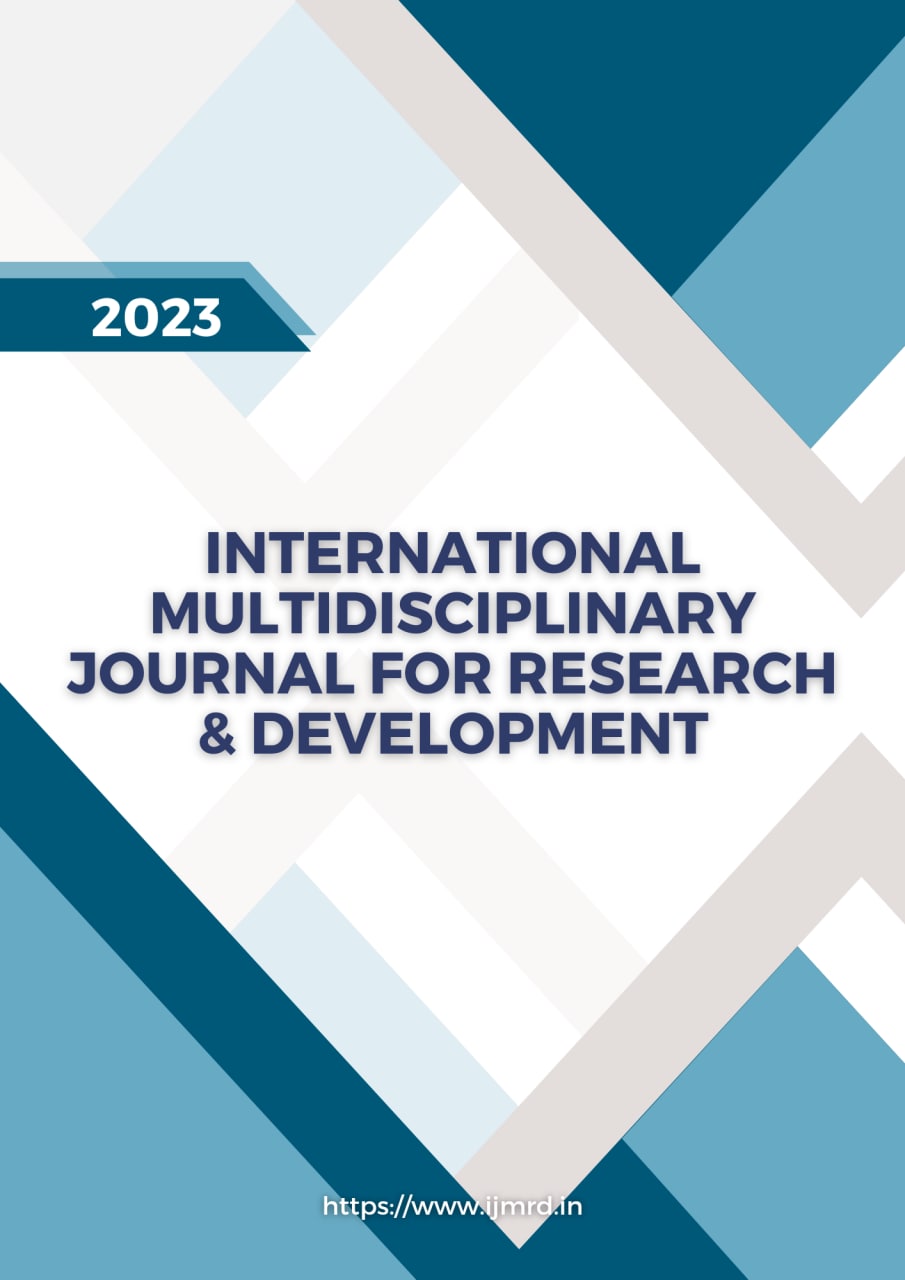MORPHOFUNCTIONAL CHANGES IN THE TRACHEA AND BRONCHUS WHEN EXPOSED TO HERBICIDES

Abstract
Recently, international organizations, including our country, have been paying increasing attention to the prevention of harm caused to human health and the natural environment by air pollution, based on an analysis of health risks and harmonization of air pollution standards. According to numerous literature published in recent years, allergic and pathomorphological changes are detected by morphofunctional indicators of the mucous membrane of the respiratory tract.
Keywords
Pathomorphological, morphofunctional, pathogenetic, pesticides, respiratory system, horticulture, hygiene standards, respiratory diseases.
References
- Page C. P., Spina D. β2-agonists and bronchial hyperresponsiveness. Clinical Reviews in Allergy and Immunology. 2006;31(2-3):143–162. doi: 10.1385/CRIAI:31:2:143. [PubMed] [CrossRef] [Google Scholar]
- Chen C.-Y., Bonham A. C., Schelegle E. S., Gershwin L. J., Plopper C. G., Joad J. P. Extended allergen exposure in asthmatic monkeys induces neuroplasticity in nucleus tractus solitarius. Journal of Allergy and Clinical Immunology. 2001;108(4):557–562. doi: 10.1067/mai.2001.118132. [PubMed] [CrossRef] [Google Scholar]
- Bonham A. C., Sekizawa S., Chen C. Y., Joad J. P. Plasticity of brainstem mechanisms of cough. Respiratory Physiology and Neurobiology. 2006;152(3):312–319. doi: 10.1016/j.resp.2006.02.010. [PubMed] [CrossRef] [Google Scholar]
- Undem B. J., Kajekar R., Hunter D. D., Myers A. C. Neural integration and allergic disease. Journal of Allergy and Clinical Immunology. 2000;106(5):S213–S220. doi: 10.1067/mai.2000.110153. [PubMed] [CrossRef] [Google Scholar]
- Bonham A. C., Sekizawa S.-I., Joad J. P. Plasticity of central mechanisms for cough. Pulmonary Pharmacology and Therapeutics. 2004;17(6):453–457. doi: 10.1016/j.pupt.2004.09.008. [PubMed] [CrossRef] [Google Scholar]
- Froemke R. C., Merzenich M. M., Schreiner C. E. A synaptic memory trace for cortical receptive field plasticity. Nature. 2007;450(7168):425–429. doi: 10.1038/nature06289. [PubMed] [CrossRef] [Google Scholar]
- Zhuo M. Neuronal mechanism for neuropathic pain. Molecular Pain. 2007;3, article 14 doi: 10.1186/1744-8069-3-14. [PMC free article] [PubMed] [CrossRef] [Google Scholar]
- de Novellis V., Vita D., Gatta L., et al. The blockade of the transient receptor potential vanilloid type 1 and fatty acid amide hydrolase decreases symptoms and central sequelae in the medial prefrontal cortex of neuropathic rats. Molecular Pain. 2011;7, article 7 doi: 10.1186/1744-8069-7-7. [PMC free article] [PubMed] [CrossRef] [Google Scholar]
- Basbaum A. I., Bautista D. M., Scherrer G., Julius D. Cellular and molecular mechanisms of pain. Cell. 2009;139(2):267–284. doi: 10.1016/j.cell.2009.09.028. [PMC free article] [PubMed] [CrossRef] [Google Scholar]
- Luongo L., Guida F., Boccella S., et al. Palmitoylethanolamide reduces formalin-induced neuropathic-like behaviour through spinal glial/microglial phenotypical changes in mice. CNS and Neurological Disorders—Drug Targets. 2013;12(1):45–54. doi: 10.2174/1871527311312010009. [PubMed] [CrossRef] [Google Scholar]
- Neugebauer V., Galhardo V., Maione S., Mackey S. C. Forebrain pain mechanisms. Brain Research Reviews. 2009;60(1):226–242. doi: 10.1016/j.brainresrev.2008.12.014. [PMC free article] [PubMed] [CrossRef] [Google Scholar]
- Wang X., Miyares R. L., Ahern G. P. Oleoylethanolamide excites vagal sensory neurones, induces visceral pain and reduces short-term food intake in mice via capsaicin receptor TRPV1. The Journal of Physiology. 2005;564(2):541–547. doi: 10.1113/jphysiol.2004.081844. [PMC free article] [PubMed] [CrossRef] [Google Scholar]
- Spina D., McKenniff M. G., Coyle A. J., et al. Effect of capsaicin on PAF-induced bronchial hyperresponsiveness and pulmonary cell accumulation in the rabbit. British Journal of Pharmacology. 1991;103(1):1268–1274. doi: 10.1111/j.1476-5381.1991.tb12335.x. [PMC free article] [PubMed] [CrossRef] [Google Scholar]
- Riccio M. M., Myers A. C., Undem B. J. Immunomodulation of afferent neurons in guinea-pig isolated airway. Journal of Physiology. 1996;491(2):499–509. [PMC free article] [PubMed] [Google Scholar]
- Tucker R. C., Kagaya M., Page C. P., Spina D. The endogenous cannabinoid agonist, anandamide stimulates sensory nerves in guinea-pig airways. British Journal of Pharmacology. 2001;132(5):1127–1135. doi: 10.1038/sj.bjp.0703906. [PMC free article] [PubMed] [CrossRef] [Google Scholar]
- Exposure to Allergen Causes Changes in NTS Neural Activities after Intratracheal Capsaicin Application, in Endocannabinoid Levels and in the Glia Morphology of NTS
- Giuseppe Spaziano, 1 Livio Luongo, 1 Francesca Guida, 1 Stefania Petrosino, 2 Maria Matteis, 1 Enza Palazzo, 3 Nikol Sullo, 1 Vito de Novellis, 1 Vincenzo Di Marzo, 2 Francesco Rossi, 1 Sabatino Maione, 1 , 2 , * and Bruno D'Agostino 1 ,
Downloads
Download data is not yet available.